Abstract
There are few data about the distribution of neutralizing antibodies (NA) against adenovirus types in the Italian population, especially the high-numbered ones. We tested the sera from 453 children and 51 young adults to evaluate NA against adenovirus prototypes 1-33. Using the microneutralization test, 338 (74.6%) of the children's sera were positive for at least one adenovirus type. Antibody to type 2 was the most frequently detected followed, in descending order, by antibody to types 5, 1 and 3. All these types are known to be associated with disease but antibody to type 7, a type also associated with disease, was less frequent than that to other serotypes such as 18 and 31, the pathogenicity of which in man is not clearly established. The antibody positivity rate rose with age for the more frequent types while it did not vary for the less frequent ones. The number of sera with NA against more than one adenovirus type increased with age. With regard to types 1-8, we found that their frequencies in Italy were similar to those found in the U.S.A.
Full text
PDF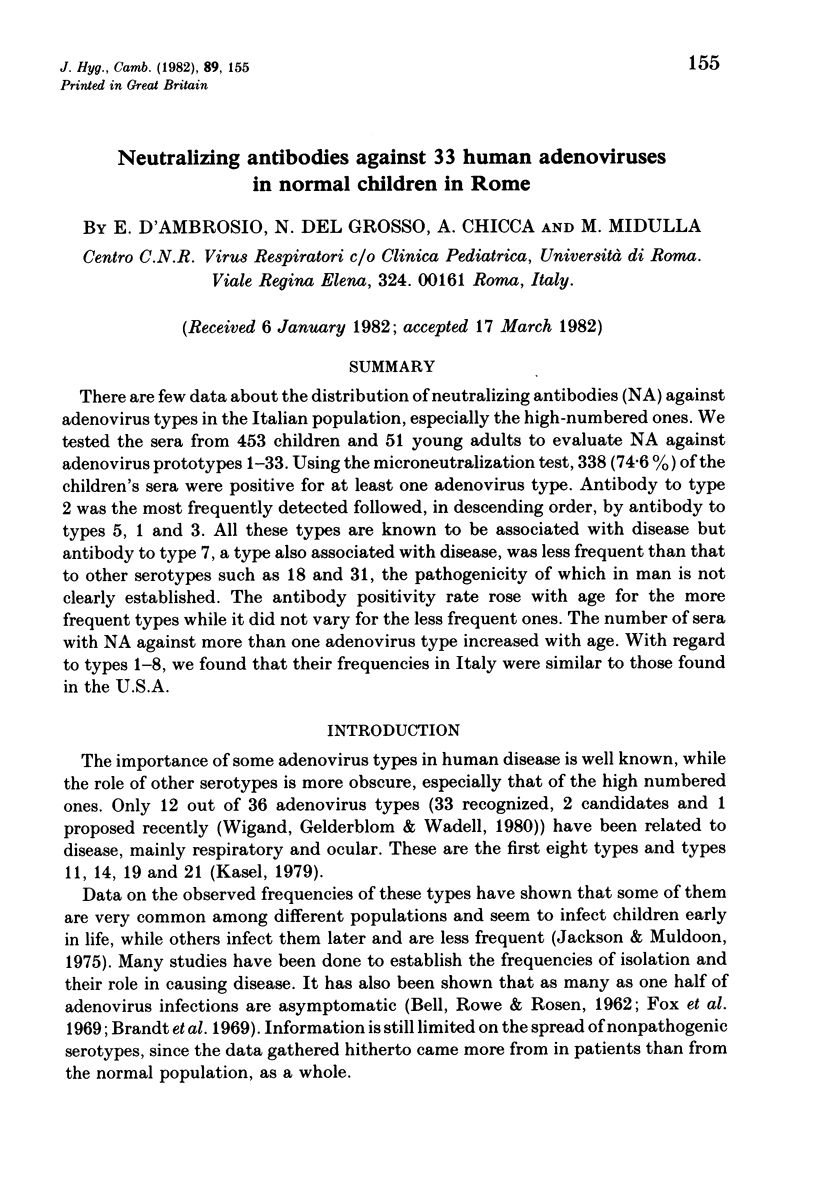
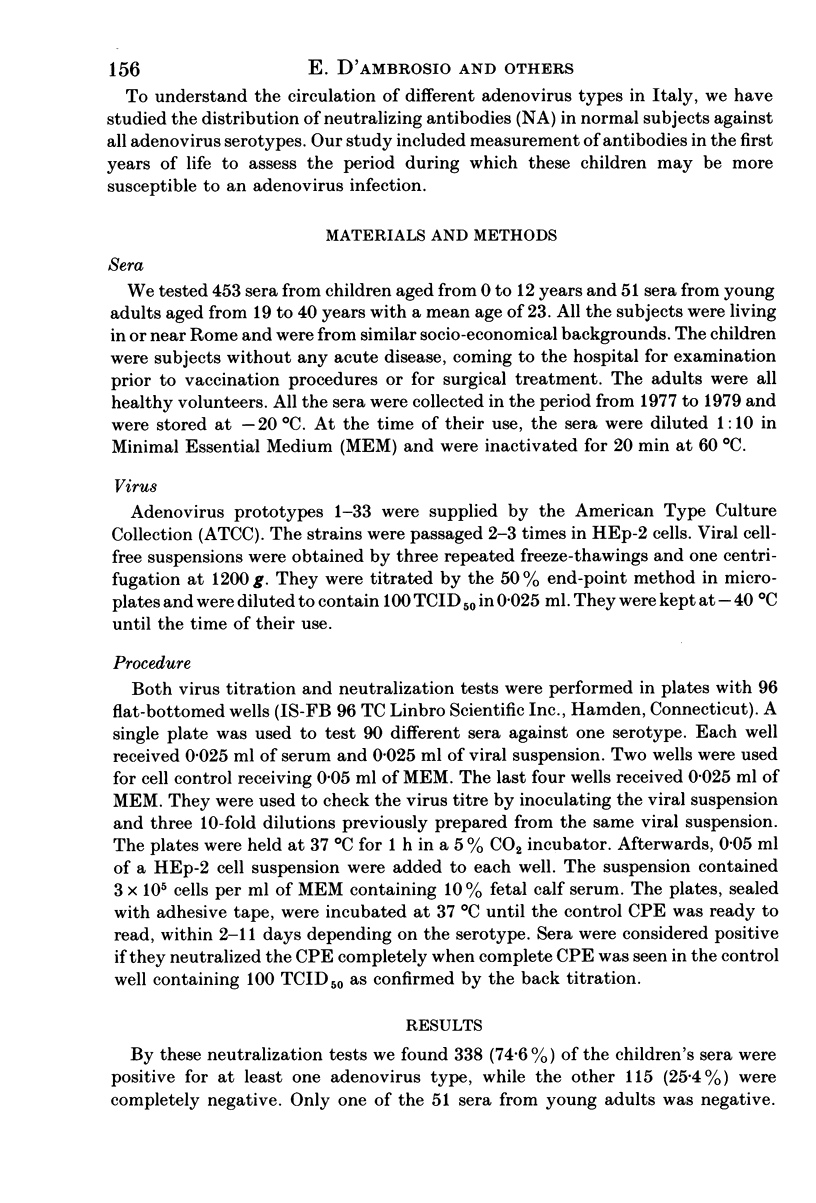
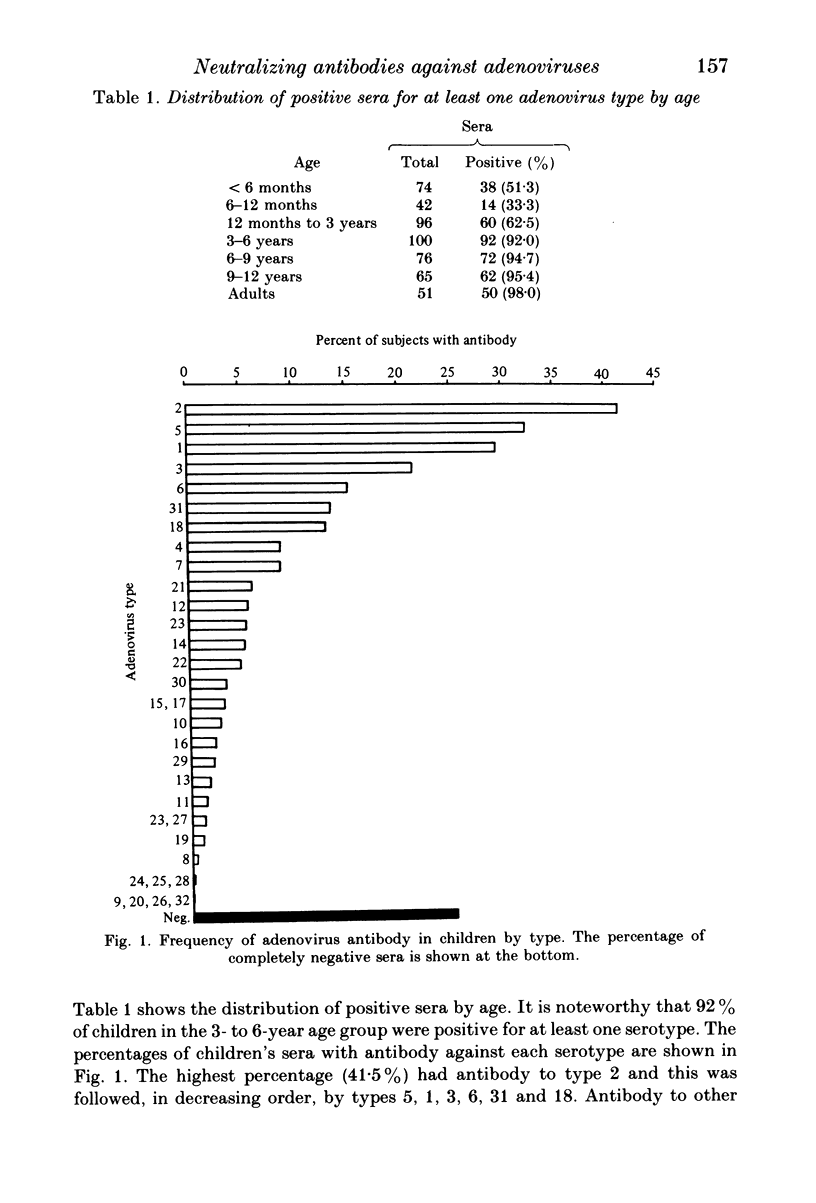
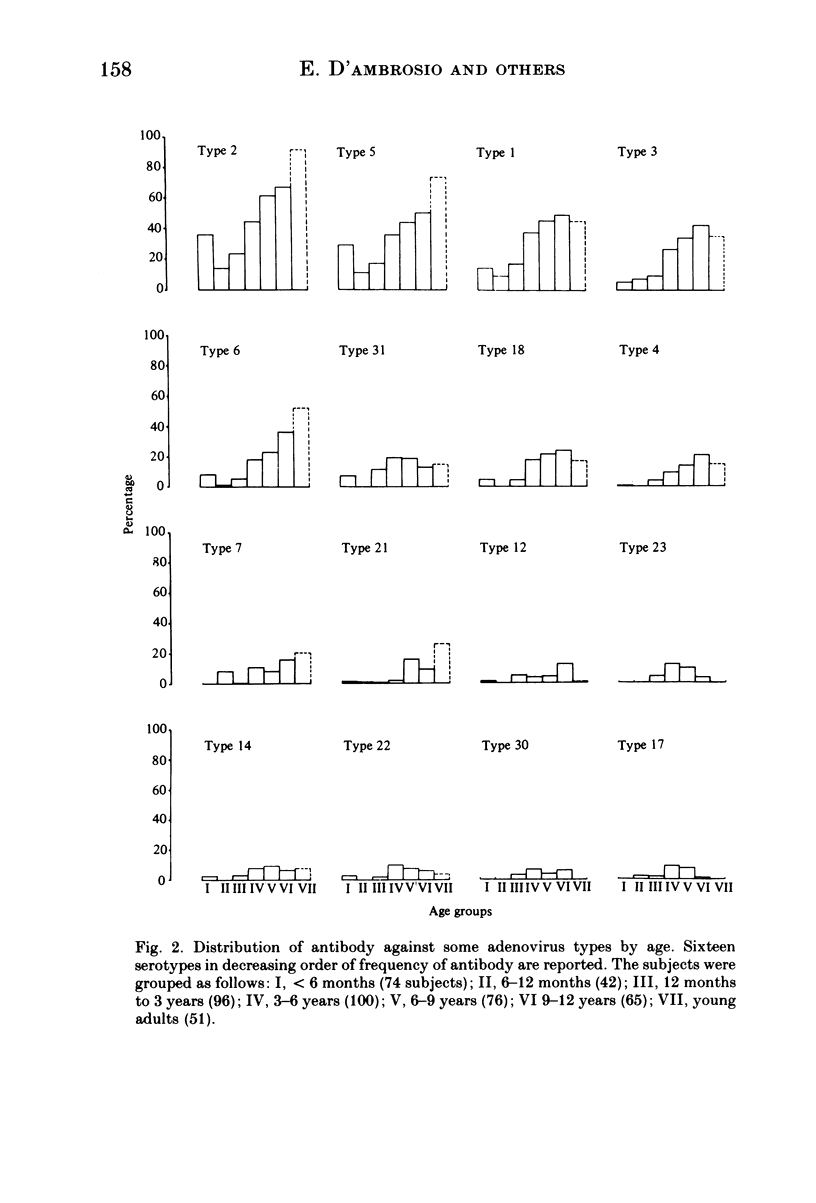
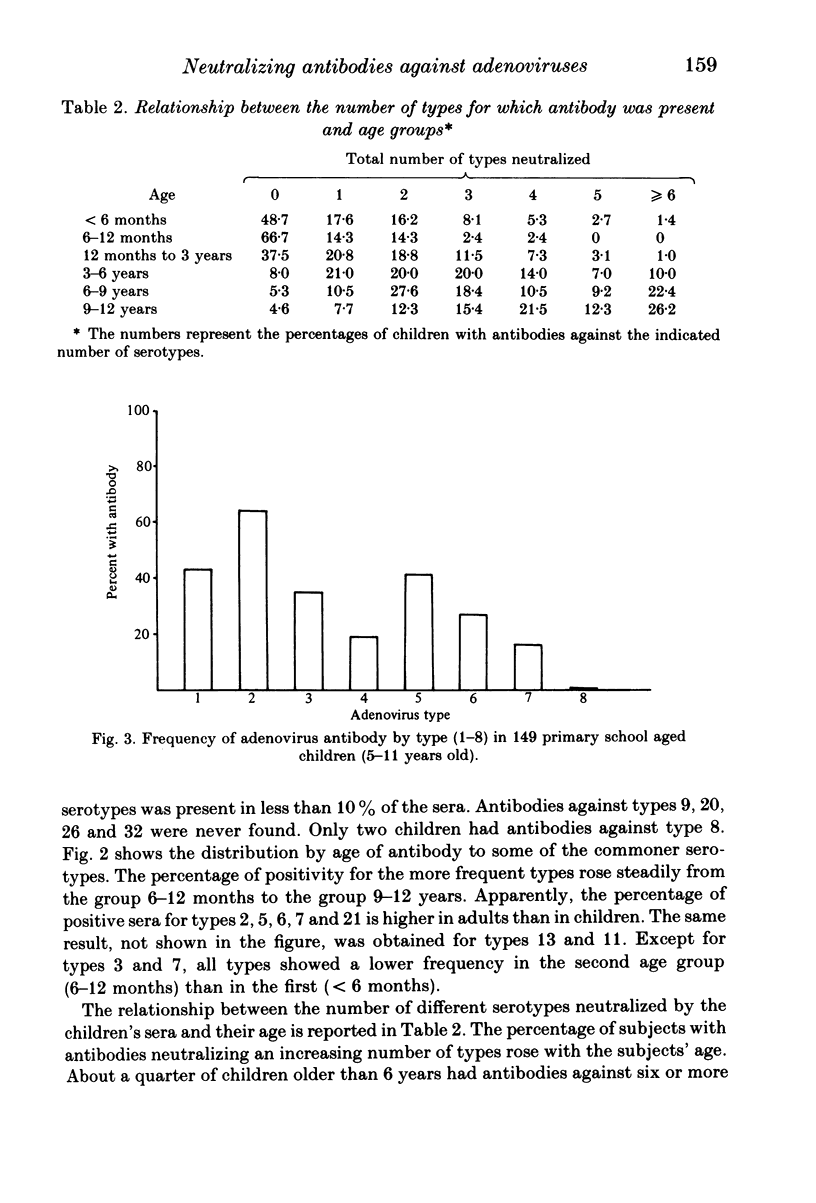
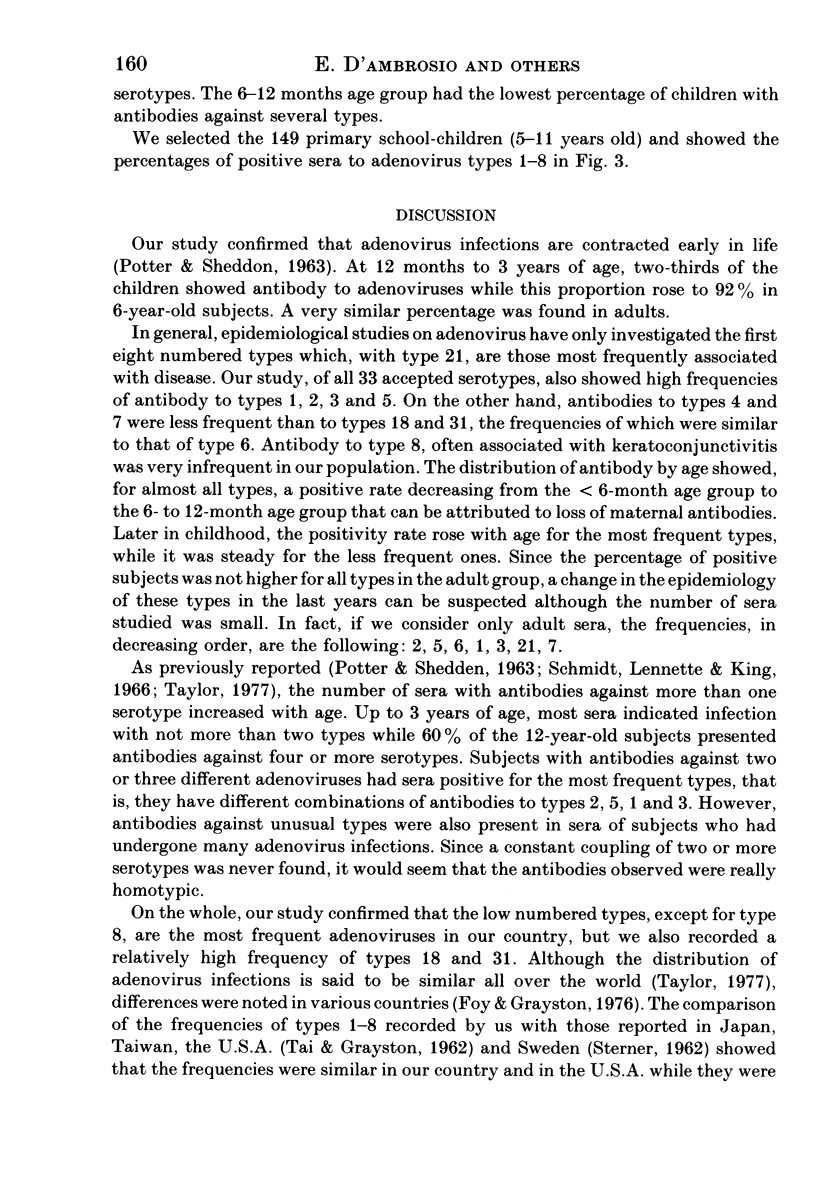
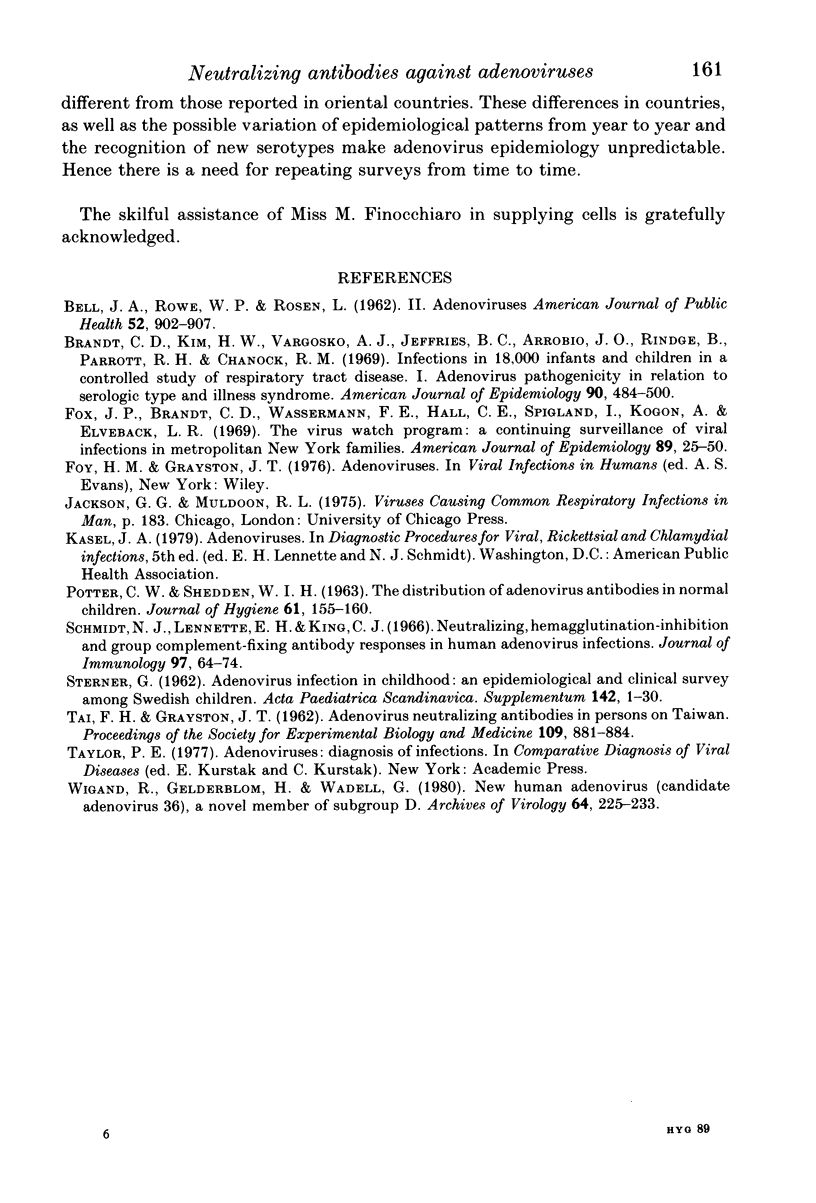
Selected References
These references are in PubMed. This may not be the complete list of references from this article.
- BELL J. A., ROWE W. P., ROSEN L. Acute respiratory diseases of viral etiology. II. Adenoviruses. Am J Public Health Nations Health. 1962 Jun;52:902–907. doi: 10.2105/ajph.52.6.902. [DOI] [PMC free article] [PubMed] [Google Scholar]
- Brandt C. D., Kim H. W., Vargosko A. J., Jeffries B. C., Arrobio J. O., Rindge B., Parrott R. H., Chanock R. M. Infections in 18,000 infants and children in a controlled study of respiratory tract disease. I. Adenovirus pathogenicity in relation to serologic type and illness syndrome. Am J Epidemiol. 1969 Dec;90(6):484–500. doi: 10.1093/oxfordjournals.aje.a121094. [DOI] [PubMed] [Google Scholar]
- Fox J. P., Brandt C. D., Wassermann F. E., Hall C. E., Spigland I., Kogon A., Elveback L. R. The virus watch program: a continuing surveillance of viral infections in metropolitan New York families. VI. Observations of adenovirus infections: virus excretion patterns, antibody response, efficiency of surveillance, patterns of infections, and relation to illness. Am J Epidemiol. 1969 Jan;89(1):25–50. doi: 10.1093/oxfordjournals.aje.a120913. [DOI] [PubMed] [Google Scholar]
- POTTER C. W., SHEDDEN W. I. The distribution of adenovirus antibodies in normal children. J Hyg (Lond) 1963 Mar;61:155–160. doi: 10.1017/s0022172400020830. [DOI] [PMC free article] [PubMed] [Google Scholar]
- STERNER G. Adenovirus infection in childhood. An epidemiological and clinical survey among Swedish children. Acta Paediatr Suppl. 1962;142:1–30. [PubMed] [Google Scholar]
- Schmidt N. J., Lennette E. H., King C. J. Neutralizing, hemagglutination-inhibiting and group complement-fixing antibody responses in human adenovirus infections. J Immunol. 1966 Jul;97(1):64–74. [PubMed] [Google Scholar]
- TAI F. H., GRAYSTON J. T. Adenovirus neutralizing antibodies in persons on Taiwan. Proc Soc Exp Biol Med. 1962 Apr;109:881–884. doi: 10.3181/00379727-109-27366. [DOI] [PubMed] [Google Scholar]
- Wigand R., Gelderblom H., Wadell G. New human adenovirus (candidate adenovirus 36), a novel member of subgroup D. Arch Virol. 1980;64(3):225–233. doi: 10.1007/BF01322702. [DOI] [PubMed] [Google Scholar]


